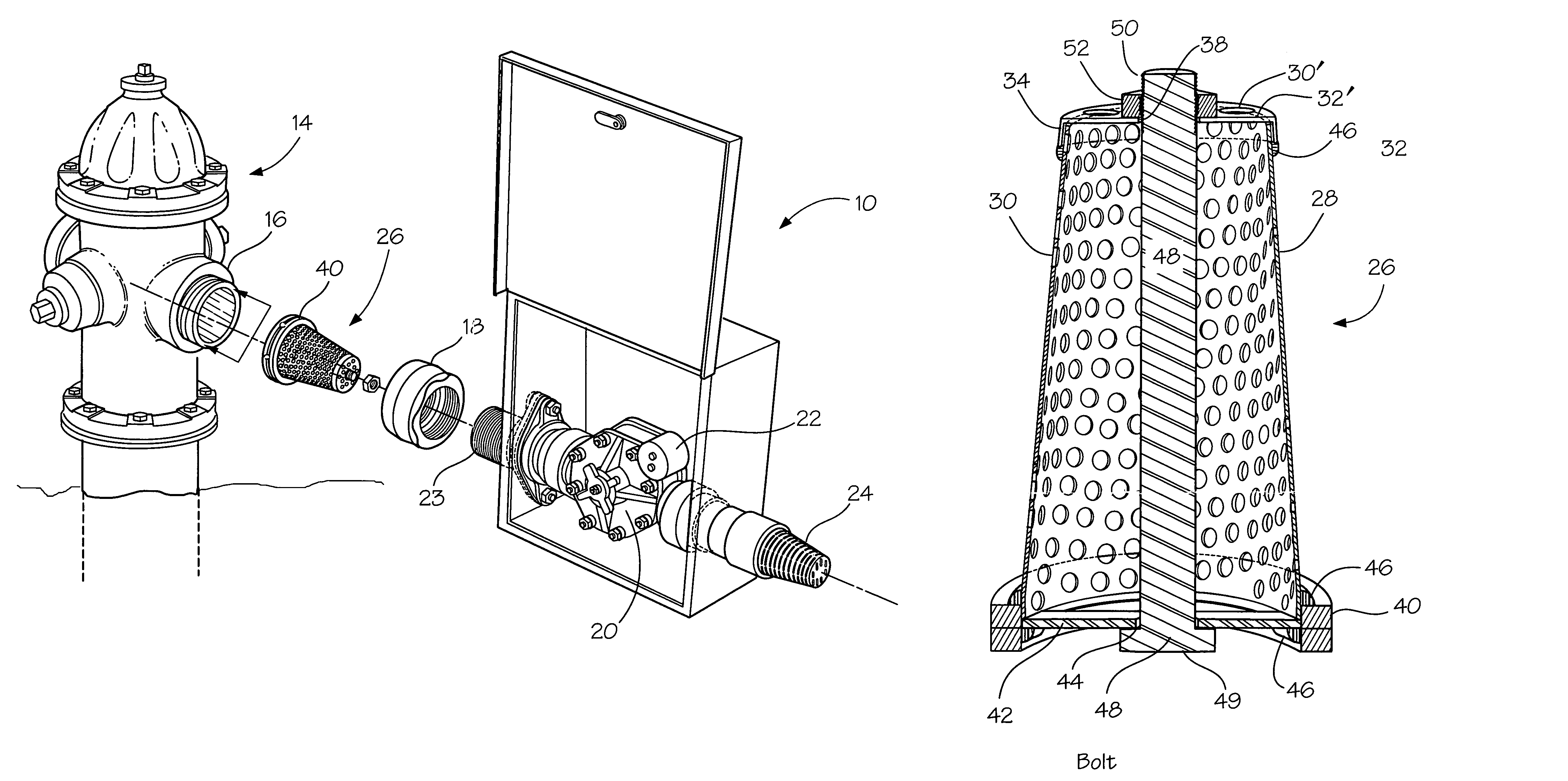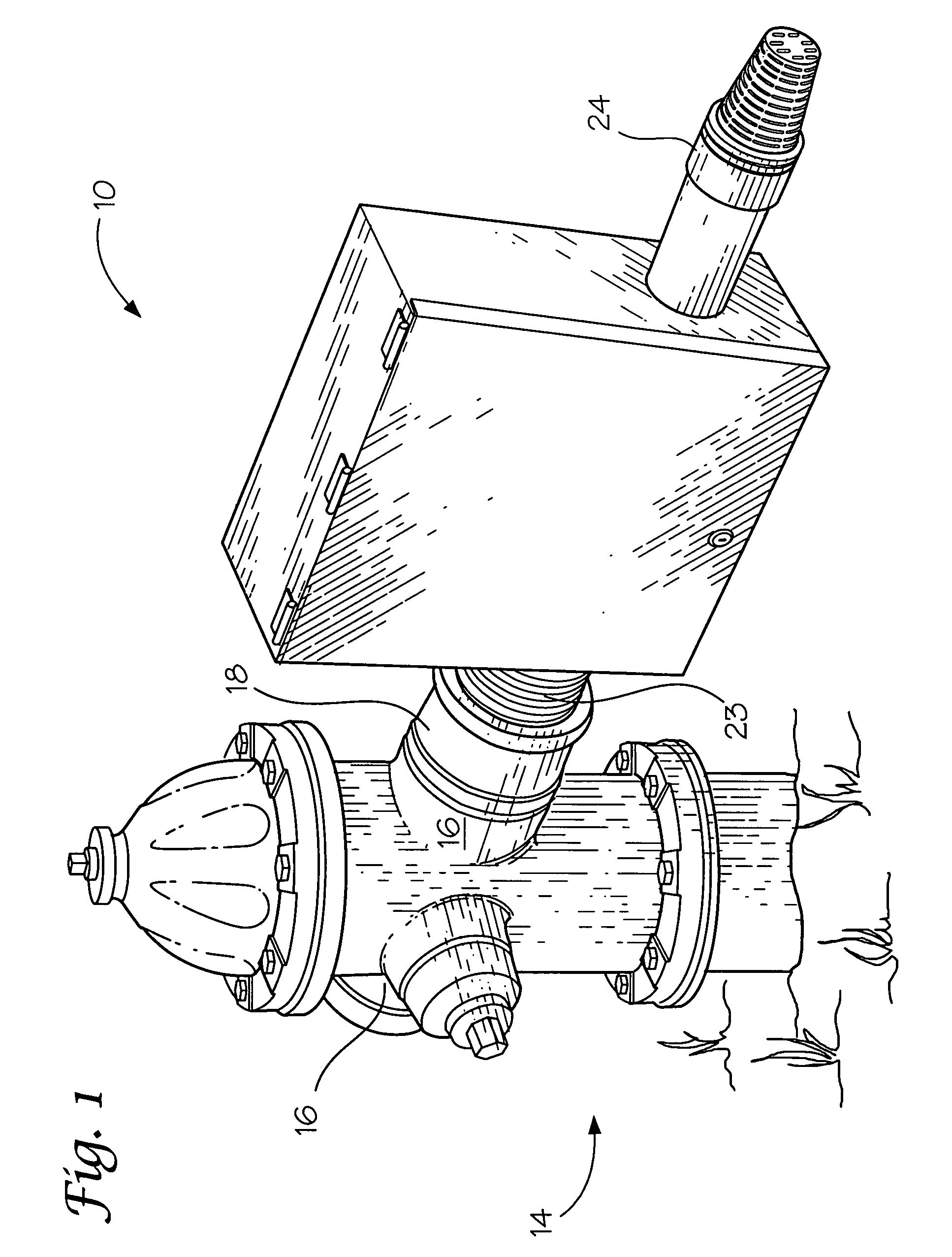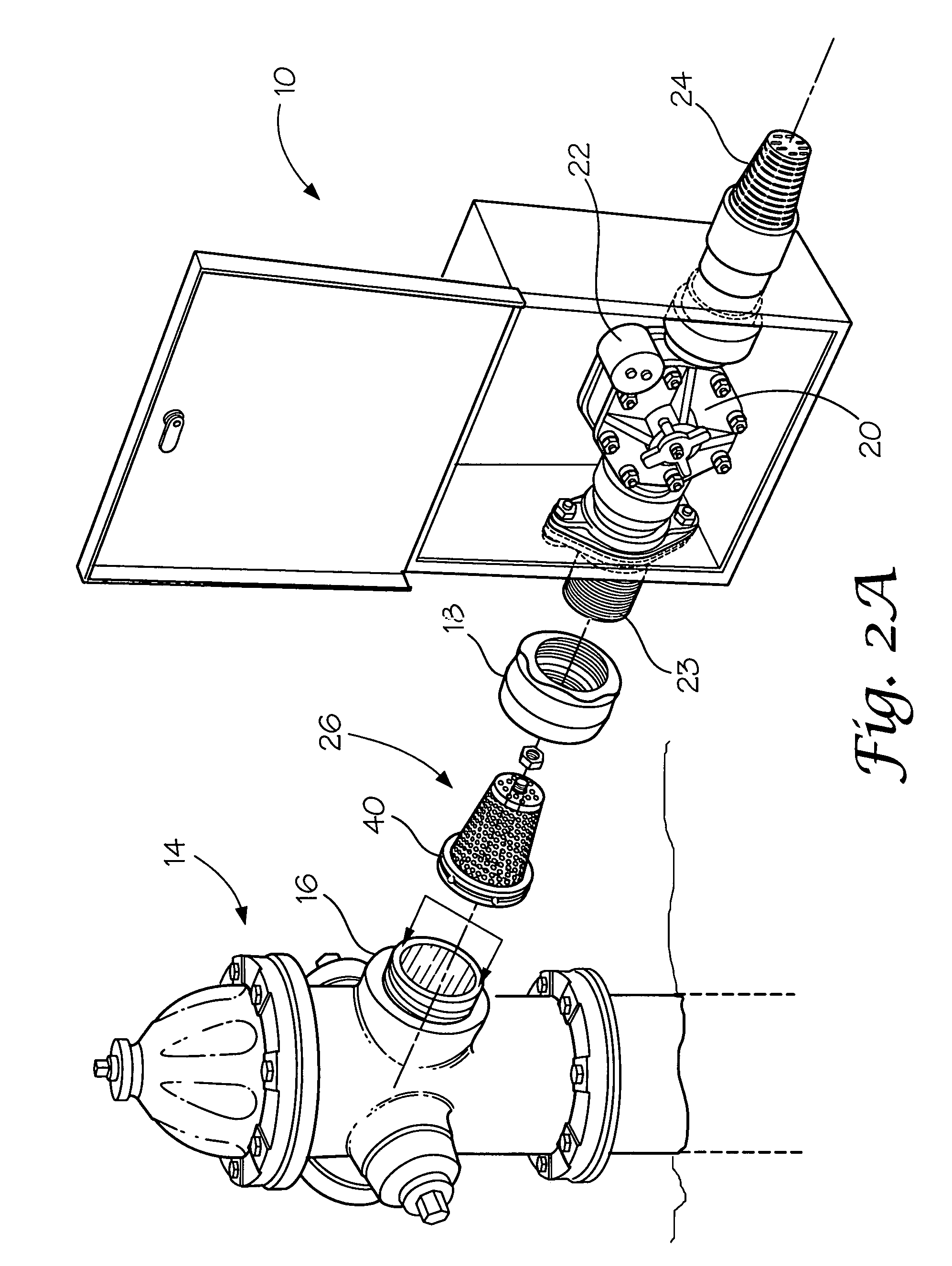System for straining water
a technology of strainer and water, applied in the direction of cleaning with liquids, drawing-off water installations, separation processes, etc., can solve the problems of water system pipes sometimes accumulating, large quantities of water are lost, valves cannot close properly, etc., and achieve the effect of easy assembly and removal
- Summary
- Abstract
- Description
- Claims
- Application Information
AI Technical Summary
Benefits of technology
Problems solved by technology
Method used
Image
Examples
Embodiment Construction
[0023]Turning now to the drawings, FIGS. 1 and 2B show discharge units for use with typical water supply systems.
[0024]As is shown in FIG. 1, a typical discharge system is shown connected to a fire hydrant.
[0025]In FIG. 2B, a known discharge system designed for use in cold climates is shown.
[0026]Typically, the usual water system includes a plurality of distribution or main lines, one of which is shown at 12 in FIG. 2B, which pass through desired areas and are connected by distribution lines to various outlets including residential, commercial, fire hydrants and discharge units. These water systems, over time, begin to accumulate sediment, a chemical buildup, and, in some instances, debris. In order to maintain the water within the system uniformly within pre-set purity standards, it is necessary to flush the system at various intervals, generally one to four times per year.
[0027]Flushing is done usually adjacent line ends or in dead areas where the water is mostly still because unw...
PUM
| Property | Measurement | Unit |
|---|---|---|
| Fraction | aaaaa | aaaaa |
| Pressure | aaaaa | aaaaa |
Abstract
Description
Claims
Application Information
 Login to View More
Login to View More - R&D
- Intellectual Property
- Life Sciences
- Materials
- Tech Scout
- Unparalleled Data Quality
- Higher Quality Content
- 60% Fewer Hallucinations
Browse by: Latest US Patents, China's latest patents, Technical Efficacy Thesaurus, Application Domain, Technology Topic, Popular Technical Reports.
© 2025 PatSnap. All rights reserved.Legal|Privacy policy|Modern Slavery Act Transparency Statement|Sitemap|About US| Contact US: help@patsnap.com



